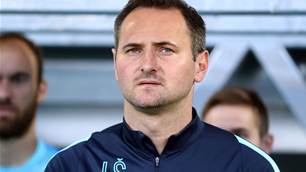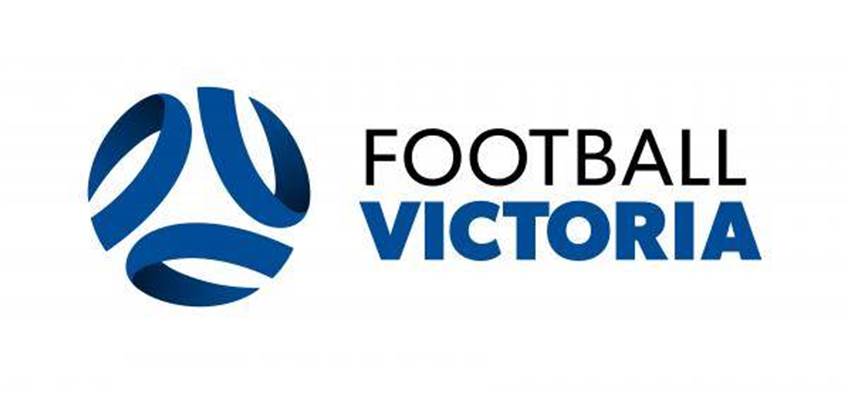Football Victoria is confident football will be played in the state in 2020, and they’re willing to go all the way into December to do it.
NPL and grassroots football – which covered FFA Cup, State Leagues, youth, MiniRoos, and futsal – was suspended by the FFA and Member Federations on March 17 in an attempt to fight the spread of COVID-19.
Initially slated for review on April 14, that hibernation was then pre-emptively extended until at least the end of May on April 1 as State and Federal Governments imposed more stringent restrictions on government gatherings – with Football Queensland (FQ) going one step further in suspending football under its jurisdiction until at least June 30.
On Monday, Victorian Premier Daniel Andrews told ABC Radio that “low risk” activities such as sporting activities and the number of people allowed to gather were among the first measures that are likely to be eased if current measures continued to be observed by the public and new COVID-19 cases remained low.
Two new cases of COVID-19 were confirmed in Victoria on Tuesday, while 22 were confirmed nationally. The death toll rose to 74 after the confirmed deaths of two people in New South Wales.
FV has been forced to stand down more than 50% of its staff in response to the jarring halt to footballing activities wrought by COVID-19, with a “skeleton” competitions team responsible for scenario planning for the game’s eventual return.
“I can’t give you any specific timeframes, that’s the million-dollar question that everyone is running about with now,” Executive Manager of Football Operations Will Hastie told FTBL.
“We get a daily briefing from FFA on the government position federally, FV CEO Peter Filopoulos and Matt Green – our senior executive manager of business services – are connected daily to the state government here as well.
“Our operation is fully of the belief that football will be played again this year and working on how quickly we can get our Victorian players – men, women, girls and boys – back playing football as quickly as possible.
“The competitions team has sent a survey to all clubs in Victoria simply, at the moment, to understand two things. One is their desire to play community football beyond September and into the spring window - October, November, potentially December.
“The second one is their access to facilities to be able to do that. What’s going to be the facility challenge as the traditional winter sports hand their facilities to cricket and the summer sports, which traditionally happens in the month of September for the summer season?
“The feedback that has come back from our clubs is very strongly towards playing and a community approach to working together to solve whatever facility problems or challenges we may have at that point in time.”
According to Hastie, these efforts to get the game Victorian clubs back on the park stretch from NPL football to community, men's to women's and senior to youth football.
Per the FFA’s 2019 National Participation Report, Victoria had 456,604 participants registered to play in the state – up 29% since 2018 – including 31,822 Miniroos participants and 27,560 youth participants.
NPL Victoria - which had experienced a surge in interest thanks to streaming deals and a push for a national second division in recent years - had completed five rounds of its 2020 season before the FFA’s decision to suspend play, while NPLW, NPL2, NPL3 and state-league football had been set to commence the week of.
“Our view is that we’ll play for as long as we can play and on the facilities that we have available to us,” Hastie said. “That will include both NPL and community football.
“From an NPL point of view, clubs essentially have 12-month access to their facilities under their NPL licences anyway.
“The question will be more around community seniors and community juniors and how much access to facilities for how long we can get them playing.
“Of course, that will really be dependent on the re-start date. If we were to get a season off as early as late June-early July for example, we don’t think we would have to go too much beyond September or October.
“But if it goes a little bit beyond July you are starting to get into October, November to December to run a season that holds its integrity for promotion and relegation purposes.”
The FV governing body, however, has as yet not designated a proverbial “date of no return” after which the season could not re-start in some form.
“We haven’t contemplated that,” said Hastie. “And the date of no return would be different for NPL than community.
“I mean, I think, of course, there would come a time when you would just have to say that the government hasn’t enabled us to get the season back on should that time come. Personally speaking, I think that is beyond September though, and all indications at the moment are that we can start to re-emerge from this crisis.
“We’ll need three to four weeks of a pre-season, so whether players can return to training and then we start the season pretty closely thereafter or how that plays out will definitely be in the government’s hands-on how those types of social gatherings will be permitted in the easing of restrictions.”
According to Hastie, though, FV is firmly aware that football, even if it is able to return in some format, will be a much different beast to the one that was placed into hibernation back in March.
Social distancing and increased hygiene practices will have to be enforced throughout the world for possibly years in the face of COVID-19, even if a vaccine is developed in the next 12-18 months.
However, with numerous clubs throughout Victoria significantly reliant on income streams such as gate takings and canteen sales there are also risks associated with commencing football without spectators and parents in attendance to the survival of clubs.
“Peter and I are working through the FFA with the Chief Medical Officer," said FV's Executive Manager of Football Operations.
"They do see community sport as playing a leadership role in the re-engagement of the community but they, of course, have then proposed to them what social distancing and enhanced hygiene protocols might look like in a new world.
“We’d say from the off that, particularly at senior NPL and NPLW level, the vibrancy of clubs requires some people around to generate some revenue through either gate or canteen or other activity. Club viability does need a level of that. We’re very aware of that.
“However, we are certainly aware that in Victoria you get the full gamut.
“If clubs wanted to take further restrictions than what even the government had mandated as necessary, we’d be fully supportive of it.”
Related Articles

'Up to the players': Croatia deny spying trip for A-League, NPL youngsters

Socceroo ruled out for A-League season, retirement likely as Glory sign NPL replacement













